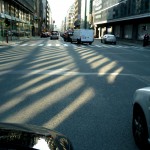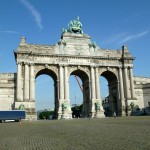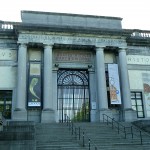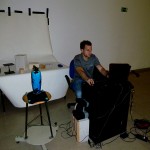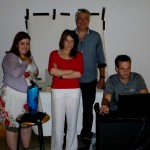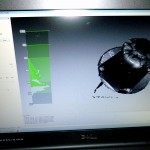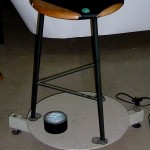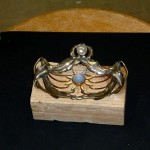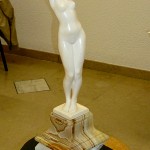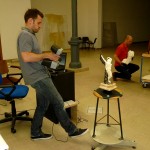The first trip of the 3D Scanner led to the capital of Belgium, Brussels. Approximately 850 kilometres away from Neubeuern in Bavaria, Brussels is not only the headquater of the European Union but also home to many a cultural attractions: The Grote Markt (Grand Place), the St. Michael and Gudula Cathedral, the Laken Castle, the Manneken Piss, the Park of Cinquantenaire, the world famous Art Nouveau buildings by Victor Horta and of course the Royal Museums of Art and History, just to name a few.
For ten days employees from Steinbichler and the Royal Museums of Art and History in Brussels were working hand in hand to digitise various Art Nouveau objects, such as vases, chairs, plates and cups, busts, statues and jewellery. To scan one object takes up to 30 minutes. The technique used is based on the so-called triangulation principal. The Art Nouveau object which is placed on a disc is scanned by structured light. In this way a spatial image develops on the screen of a laptop. A colour camera is then employed to capture the texture and the shades of the object. The digital reworking of the scanned data can take another 30 minutes. That is way only 12 to 15 art objects can be digitised per day.
Koninklijke Musea voor Kunst en Geschiedenis [Royal Museums of Art and History], Brussels, Belgium
- On the road to the Royal Museums of Art and History.
- Cinquantenaire triumphal arch.
- The Cinquantenaire Museum.
- Work station.
- Colleagues from the Royal Museums and Steinbichler Optotechnik at work.
- Computer-generated image of a scanned vessel.
- Preparation for three-dimensional scanning.
- Art Nouveau sculpture of a female nude.
- Scanning in process.
